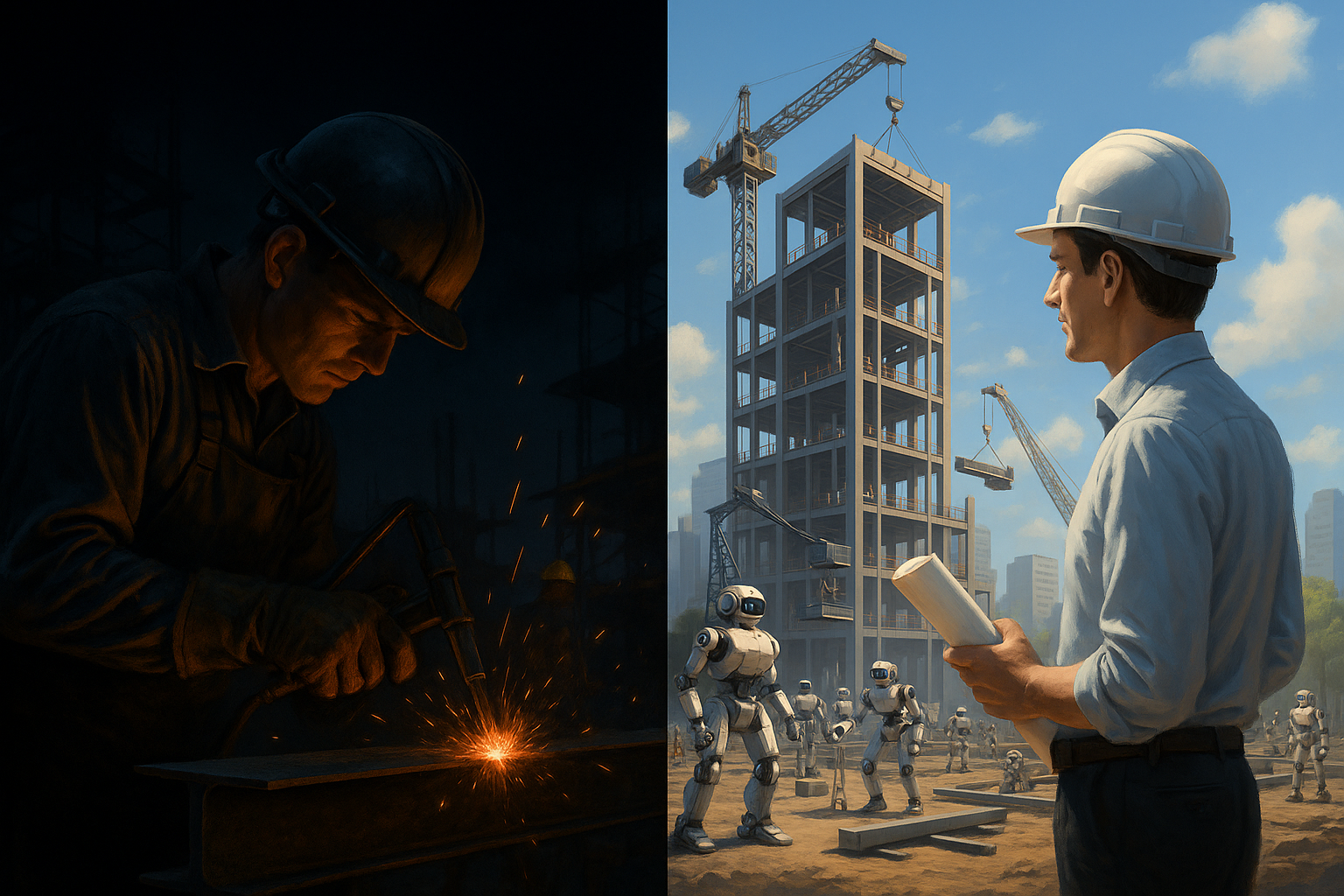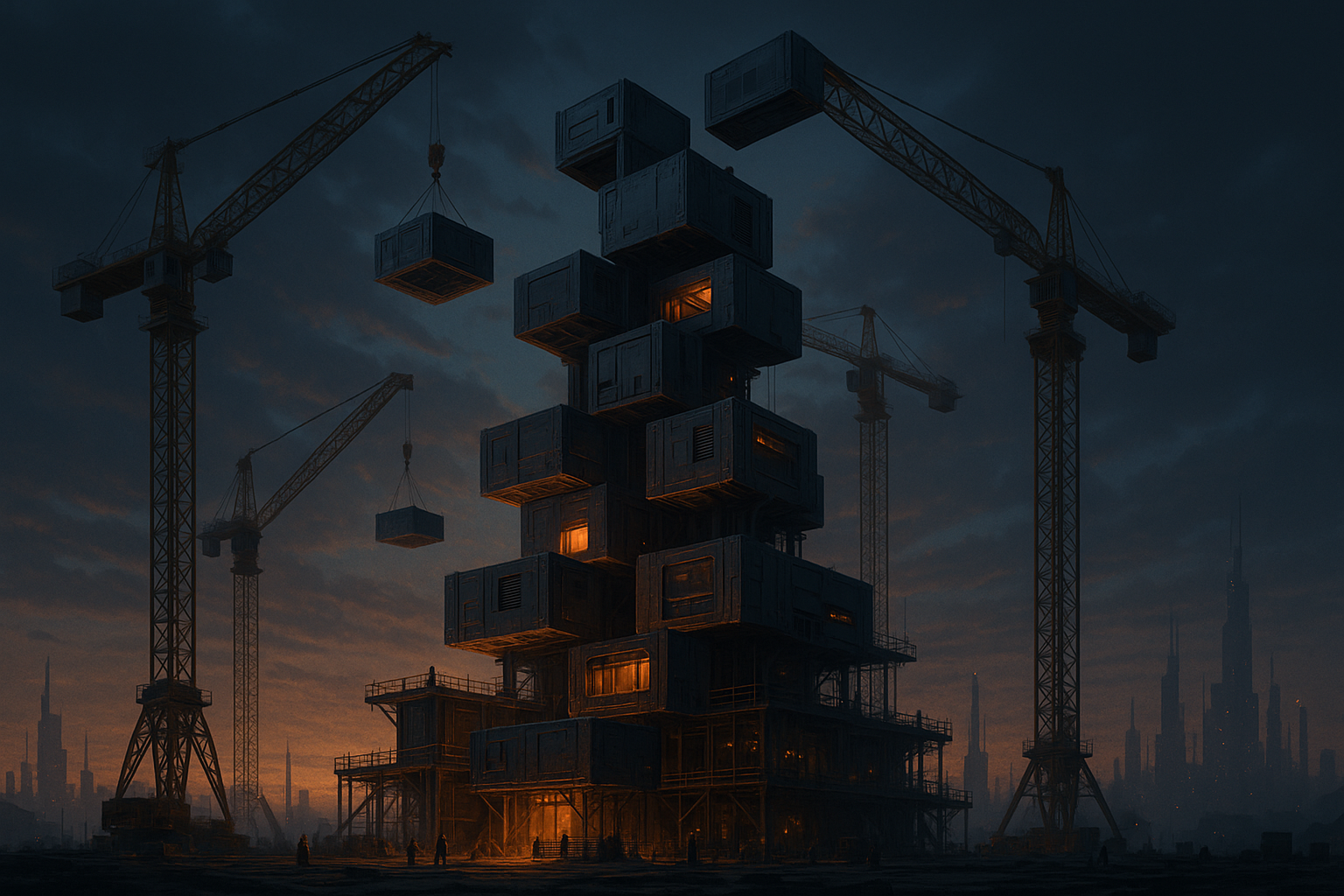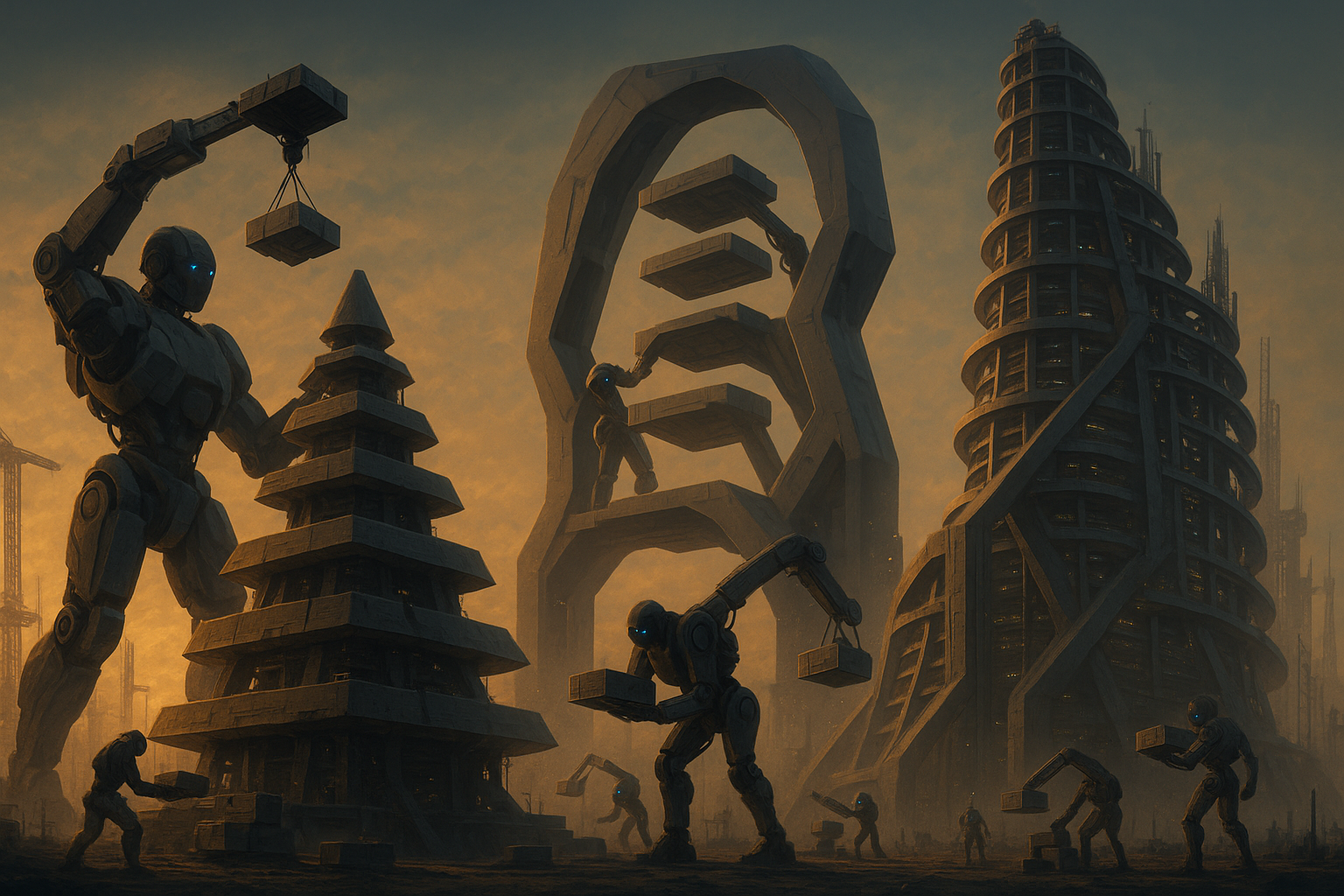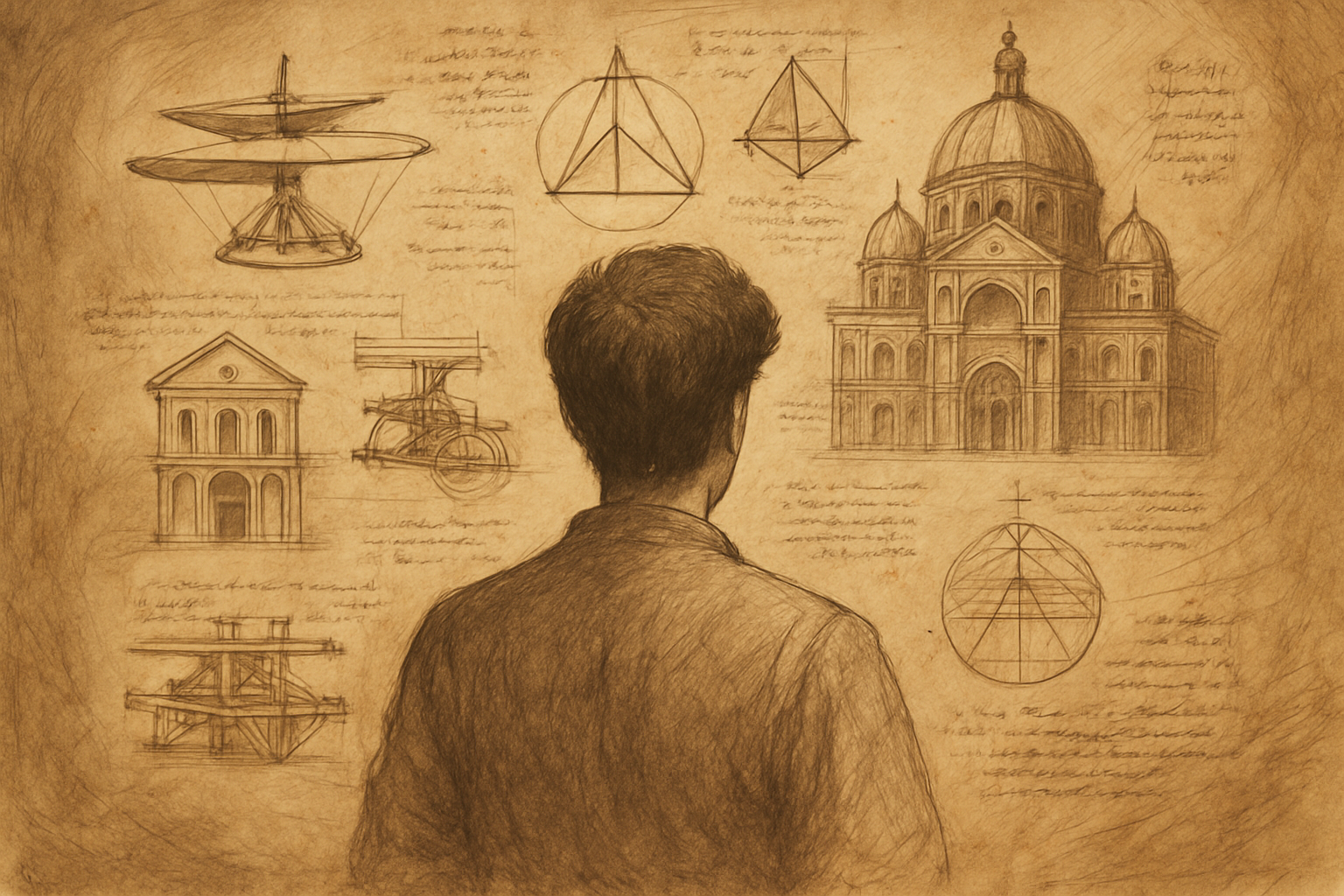The AI Era: From Engineers to Architects
November 1, 2025
•
Sanjay Guruprasad

I've been reflecting on building truly exceptional software in the AI era. It's an exciting time to build things. We have tremendous leverage, like never before. We've been gifted an army of robot engineers with surprising qualities — a wide breadth of knowledge (the whole internet), infinite stamina, extreme responsiveness and zero need for motivation.
We're an impossibly small team using AI non-stop to build Rune and I've been trying to find the right analogy to articulate just how much our approach to writing software has shifted.
Previously, writing code felt like constructing a building from scratch, brick by brick. Of course, Open Source does provide community-built "pre-fabs", that can be dropped into your structure and built on top of. You still manually weld and integrate these pre-fabs into your building. You spend hours learning and understanding the more complex pre-fabs. They aren't typically customizable and come with their own quirks and limitations. You often tweak your building's structure to work well with the pre-fabs you're building with.

It isn't always easy to modify the core of a pre-fab when there's some kind of structural issue that is unique to your usecase. If you did make good improvements though, you could share the improved pre-fab with the whole community. As you saw and used these pre-fabs, you learnt new ways to build. Each step of the process was manual and fairly labor intensive, with learning curves and manual scaffolding to hold everything together when creating your truly unique masterpiece. The work was time consuming and required investment to master specific techniques and your experience with difference tools, materials and architectures gave you tremendous speed gains.
But suddenly almost overnight, our robot engineers have come in and changed the game. They've seen every pre-fab ever made (the good ones and the bad ones) and can rapidly cobble together a building from the pre-fabs. But they can go beyond, also composing them together and building the manual scaffolding around these pre-fabs to get things working. The more close we are to a standard pattern, the more our minions excel at producing robust sculptures. But even with something quite custom, they are able to cobble together a working sculpture quite rapidly.
In this new world, carefully piecing together a foundation one brick at a time no longer makes sense. We can get the robot to rapidly create a quick initial prototype. Our main cost has always been time, but now the time to create a working prototype structure has shrunk massively. A more iterative approach begins to shine. We can spin off 2-3 different prototypes in parallel to get a feel for the pros and cons of different architectures. We can be less conservative about sticking to things we understand well — we can spin up sculptures using new pre-fabs and techniques we've never seen before without any initial barriers and learning curves.

Once our minions have spun up these initial prototypes, we can study them to see if they are structurally sound. We can directly inspect the pros and cons instead of using thought experiments. We can move from conjecture to working experiment instantly. We have to be very discerning with our new superpower. We need clear first principles thinking to assess that an approach is sound even if it uses techniques we've never seen before.
Once we've identified the good and bad parts of our different prototypes, we can proceed in two different ways. The old approach involved carefully fixing our initial (and only) manual prototype as we identified issues with it. But now that our prototypes cost nothing to make, we can just discard them and spin up a brand new one using improved instructions based on what we've learned. We can bring together the best parts, be a lot more prescriptive about exactly what we'd like and treat our minions as plain "doers" in this go around. While throwing everything away was super expensive before, rewrites were still often necessary. Now they are incredibly cheap, and should become the norm!
Our minions are good at building quickly, but their quality and architectural choices are often questionable. This is fine for unimportant parts on the peripheries, but a disaster waiting to happen in foundational pieces — a potential 2am production issue in the making. So we have to be exceptional at poking, prodding and whittling away to refine our code architecture to perfection — this is our new role and we can pretty much spend all our time on this piece because the construction work is mostly done by our AI minions now. And so we can get out of construction and focus much more on architecting.
In this new world, architecting software becomes the central skill and you no longer need to manage a large group of builders to architect software. The ability to understand product needs, design the right architecture, discern the good from the bad using first principles and constantly course correct and whittle things down to perfection — this becomes the central loop.

Are you more of an architect than an engineer? Do you think from first principles and have the ability to discern that an approach is more elegant for the problem at hand? Come join Rune and architect one of the coolest products you will get to build.
